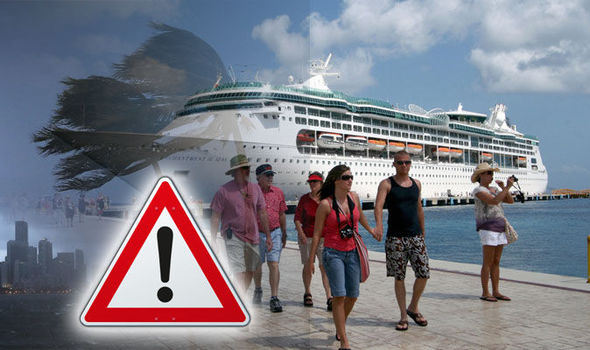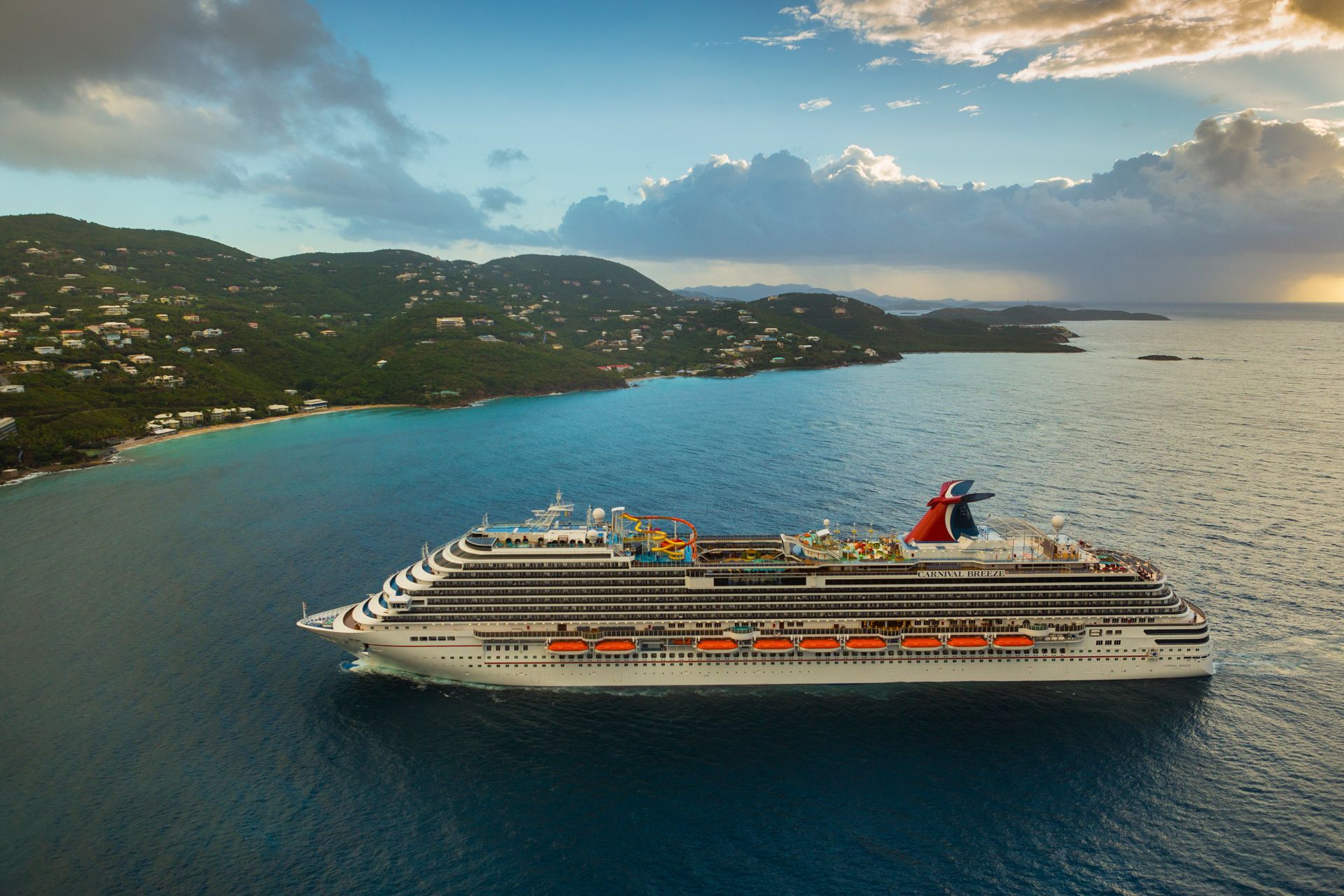FORT MYERS — Maybe, so soon after a deadly duo of hurricanes ravaged some of its islands, this isn’t the best time to take that Caribbean cruise.
In early September, as the hurricane called Irma spun out of the eastern Caribbean toward the state called Florida, Caroline Elkins was safely at home in North Carolina.
But her husband, Tim, had driven to their second home, in Fort Myers on Florida’s west coast, even though the weather people had predicted this storm would ride up the East Coast, the other side.
Irma, being a hurricane, proved unpredictable.
“I went down to cover up and board up my windows and all that stuff,” said Tim Elkins, who found himself stuck there because of evacuation traffic.
“We got hit pretty bad,” Caroline said. “All we’ve been doing is yard work since early October.”
Now, in mid-December, just three months after the storms, here they were, finishing breakfast with three strangers at an unreserved table in the posh Da Vinci Dining Room, aboard the 3,000-passenger Crown Princess, cruising the eastern Caribbean.
All were gliding toward the same Caribbean islands that two hurricanes (Irma, then quickly Maria, and both without mercy) had hit pretty bad.
On a cruise that, under the circumstances, seemed … odd.
But, said Tim Elkins: “We needed a vacation.”
More than a few passengers couldn’t help but wonder what they would find when they reached St. Kitts, Antigua, Grand Turk and, especially, St. Thomas (and its nearby U.S. Virgin Isle, St. John), the ports included on this Crown Princess itinerary. The Elkins were among them.
Here is what they found:
Virtually nothing out of place on St. Kitts. “We’ve already pulled ourselves together,” said genial driver-guide Lofton Foreman, aka “Uncle Barry.” The fortress on Brimstone Hill, a UNESCO site, was as impregnable as it was 300 years ago. The beaches remained inviting.
On Antigua, most of the 1,800 residents of neighboring Barbuda made homeless by Irma were still refugees, some housed in makeshift facilities, including an abandoned hospital. “We’re a country that opens our hand to everyone,” said Reginald Samuel, another guide. “So everybody that came, we accepted them.”
He paused. “The hurricane was supposed to hit Antigua.”
The big yachts were safe in English Harbor, the island’s 365 beaches hardly affected.
Turks and Caicos, including the capital of Grand Turk, took on Irma and Maria, and damage — homes without roofs, beaches with replacement palm trees — was evident.
But passengers found most debris gone and its 1852 lighthouse standing as strong and proud as the Brits who built it.
The port businesses had reopened not long before Crown Princess and Silversea’s Silver Muse, parked alongside, got there; away from the ships, some dive shops, modest restaurants and small hotels were welcoming visitors — and resident donkeys foraged as usual.
Those who made their way by ferry from St. Thomas to St. John would find an island hit hard. Both hurricanes got it. The landmark Caneel Bay Resort likely won’t take guests before 2019. The trails in Virgin Islands National Park had reopened, and so most of its beaches and snorkel spots, and the island’s beloved greenness were gradually returning. It could be visited, but carefully.
And St. Thomas?
If passengers had arrived in September, “they would’ve been horrified,” said Alani Henneman Todman, communications director for U.S. Virgin Islands tourism, which covers St. Croix as well as St. Thomas and St. John. “All the (utility) poles were down. There were trees everywhere. There was devastation everywhere.
“That was after Irma,” she said. “And then we had Maria.”
Lost, some until next year: Marriott’s Frenchman’s Reef, the Ritz-Carlton and Bluebeard’s Castle Resort, among others. Some smaller hotels and villas are functional.
“You can come,” Todman said. “But you have to do your research.”
Which all sounds bleak for St. Thomas — and it is, but …
Justin Lawes is captain of the Crown Princess. Having lived in the Caribbean, he knows the territory, the dry parts as well as the nautical.
“The thing about the Caribbean islands,” he said, “is that they’ve been through this before. They are super-resilient.
“All the cruise lines joined forces,” he added. “It’s amazing when you look at the work they’ve done.”
The famous beach at Magens Bay was a disaster, its facilities ruined, its palms stripped and debris everywhere. It’s Magens again. When ships are in port, it’s busy.
Restaurants were open.
Beloved Gladys’ Cafe was back serving Gladys’ curry goat and conch in lemon sauce as she has for 25 years.
A few shops on Main Street were boarded up, but most were open and welcoming.
“Downtown, we were OK,” said Lorraine Joseph at Lucky Jewelers. “The residential is what got damaged the most. We managed to hold on. It’s coming back to normal.”
It’s a new normal.
“After a hurricane, the old normal never exists again,” Todman said. “And it’s a good thing. In a lot of ways, it’s a cleansing, a cleansing of the island.”
Not only on St. Thomas, but on other islands in the hurricanes’ path that lost major hotels, the shops, bars and restaurants open and close according to ships’ timetables. When they sail off, the tourists — more than ever — sail away, too, with their livelihood-sustaining dollars aboard.
Which made this a very interesting time to take that Caribbean cruise — as the Elkinses figured all along, even before they left the ship.
“It may not be as pretty as it was last time,” Tim Elkins said over breakfast at sea, “but the people are probably still as friendly and as welcoming.
“It’ll come back,” he said. “They need our help.”
Might be the best time after all.


